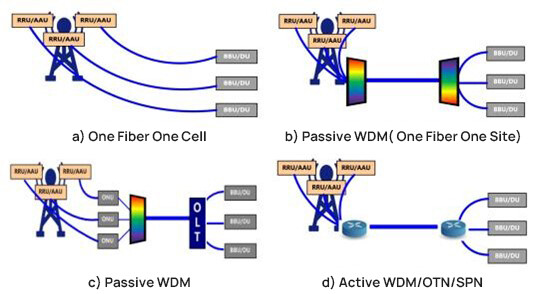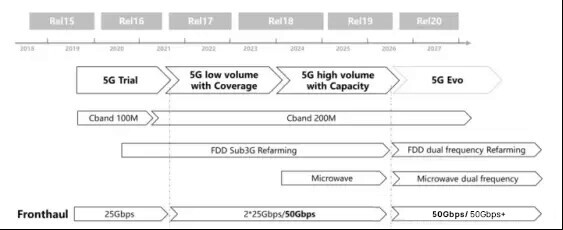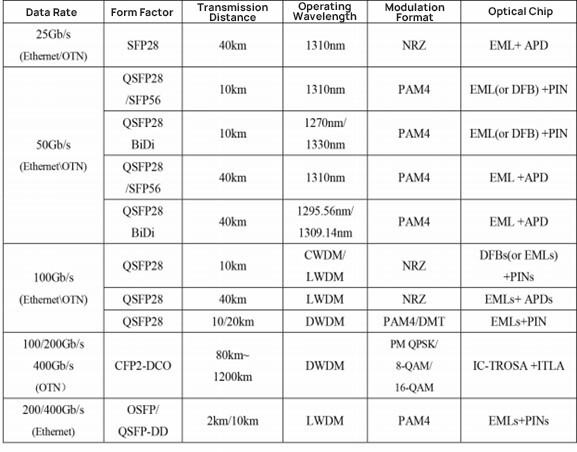Mobile communication continues the development pattern of one generation of technology per decade and has gone through 1G, 2G, 3G and 4G development. Each generational leap, each technological advancement, has greatly contributed to industrial upgrading and economic and social development. From 1G to 2G, the transition from analogue to digital communications was realised and mobile communications entered thousands of households; from 2G to 3G and 4G, the transformation from voice to data services was realised and transmission rates were increased by hundreds of times, promoting the popularity and prosperity of mobile internet applications. At present, mobile networks have been integrated into every aspect of social life, profoundly changing people's communication, communication and even the entire way of life. 4G networks have created a prosperous Internet economy, solving the problem of people communicating with each other anytime and anywhere. With the rapid development of the mobile internet, new services and services are emerging and mobile data traffic is exploding.
As a new type of mobile communication network, 5G will not only solve the problem of human-to-human communication, providing users with a more immersive and extreme business experience such as augmented reality, virtual reality and ultra-high definition (3D) video, but will also solve the problem of human-to-thing and thing-to-thing communication, meeting the needs of mobile medical, automotive networking, smart home, industrial control, environmental monitoring and other IoT applications. Ultimately, 5G will penetrate all sectors of the economy and society and become a key new infrastructure to support the digital, networked and intelligent transformation of the economy and society.
The 5th Generation Mobile Communication Technology (5G) is a new generation of broadband mobile communication technology with high speed, low latency and large connectivity. 5G communication facilities are the network infrastructure for the interconnection of people, machines and things.
The International Telecommunication Union (ITU) has defined three major application scenarios for 5G, namely enhanced mobile broadband (eMBB), ultra-high reliability low latency communication (uRLLC) and massive machine class communication (mMTC). Enhanced Mobile Broadband (eMBB) focuses on the explosive growth of mobile Internet traffic and provides mobile Internet users with a more extreme application experience; Ultra Reliable Low Latency Communication (uRLLC) focuses on industrial control, telemedicine, autonomous driving and other vertical industry applications with high requirements for latency and reliability; Massive Machine Type Communication (mMTC) focuses on smart cities, smart homes, environmental monitoring and other applications that rely on transmission. mMTC is mainly for smart cities, smart homes, environmental monitoring and other applications targeting sensing and data collection.
The ITU has defined eight key performance indicators for 5G, of which high speed, low latency and large connectivity are the most prominent features, with user experience rates up to 1Gbps, latency as low as 1ms and user connectivity up to 1 million connections/square kilometre.
5G mobile communication key performance indicators
1. Peak rates of 10-20Gbit/s are required to meet the transmission of large data volumes such as HD video and virtual reality.
2. Air interface latency as low as 1ms to meet real-time applications such as autonomous driving and telemedicine.
3. With the ability to connect millions of connections/square kilometre of devices to meet IoT communications.
4. Spectrum efficiency should be improved by more than 3 times compared to LTE.
5. Continuous wide area coverage and high mobility with a user experience rate of 100Mbit/s.
6. Traffic density of 10Mbps/m2 or more.
7. Mobility supports high speed movement of 500km/h
Optical modules are the basic building blocks of the physical layer of 5G networks, widely used in wireless and transmission equipment, and their cost is increasing in the system equipment, even more than 50-70% in some equipment, which is a key element of 5G low-cost, wide coverage.
The typical application scenarios and demand analysis are shown in Table 1.

Table 1 5G bearing optical module application scenarios and demand analysis
The typical application scenario of 5G front transmission is shown in Figure 1, including fiber direct connection, passive WDM and active WDM / optical transport network (OTN) / sliced packet network (SPN) and so on. The direct fibre scenario generally uses 25Gb/s grey optical modules, supporting both two-fibre bi-directional and single-fibre bi-directional types, mainly including 300m and 10km transmission distance. Passive WDM scenarios mainly include point-to-point passive WDM and WDM-PON, using a pair or a single fibre to achieve multiple AAU to DU connections, typically requiring 10Gb/s or 25Gb/s coloured optical modules. For active WDM/OTN scenarios, 10Gb/s or 25Gb/s short-haul grey modules are typically required between AAUs/DUs and WDM/OTN/SPN devices, and N x 10/25/50/100Gb/s dual-fibre bi-directional or single-fibre bi-directional colour modules are required between WDM/OTN/SPN devices.

Figure 1 Typical application scenarios for 5G forward transmission
The typical requirements for optical modules for 5G front transmission application scenarios are as follows.
(1) Meet the industrial grade temperature range and high reliability requirements: considering the AAU all-outdoor application environment, the front transmission optical module needs to meet the industrial grade temperature range of -40℃~+85℃, as well as dustproof and other requirements.
(2) Low cost: The total demand for optical modules in 5G is expected to exceed that of 4G, with tens of millions of front transmission optical modules in particular, and low cost is one of the industry's main demands for optical modules. The access layer will mainly use grey or coloured optical modules at 25Gb/s, 50Gb/s and 100Gb/s, while the aggregation layer and above will use more DWDM coloured optical modules at 100Gb/s, 200Gb/s and 400Gb/s.
The front transmission optical module is an important part of the physical bearing of the CPRI link connecting the baseband processing unit (BBU) and the remote radio frequency unit (RRU) / active antenna processing unit (AAU). From 2G era of 1.25Gb/s, to 3G era of 2.5Gb/s, to 4G era of 6/10Gb/s, bearing optical module rate continues to evolve, the transmission distance mainly includes 300m, 1.4km and 10km, etc.. With the arrival of the 5G era, the number of AAU antennas to achieve 8T/8R to 64T/64R 8 times higher, the bandwidth of the null port from 20MHz to 100MHz, if maintain CPRI cut scheme, bandwidth demand will appear 10Gb / s to 400Gb / s 40 times higher. To reduce the bandwidth pressure, the industry has adopted the eCPRI cutover scheme to deploy some of the BBU baseband processing on the AAU, thereby reducing the bandwidth demand between the BBU and the AAU. With a 100MHz null bandwidth and 64T/64R, for example, the 5G forward single interface bandwidth requirement drops to the 25Gb/s order of magnitude, which can be effectively supported by reusing the mature Ethernet industry chain.
In the early stages of 5G deployment, the three major operators centralize BBUs to reduce the need for server room resources, thus enabling rapid scale deployment. However, centralised radio access network (CRAN) scenarios consume large amounts of backbone fibre, and the industry accordingly proposed 25Gb/s-based wavelength division multiplexing (WDM) solutions such as 6-wave CWDM, 12-wave LWDM/MWDM and 48-wave DWDM to converge and save fibre resources. As 5G evolves, the focus of the subsequent version (Rel 17/Rel 18) will be on Sub 10GHz, millimeter wave and other frequency bands. If the number of antennas and the bandwidth of the airports further increases, 50Gb/s and higher speed optical modules will be required to meet the front transmission bandwidth requirements.

Figure 2 5G front transmission bearing demand evolution
The front transmission optical module mainly includes 25Gb/s and 100Gb/s two rate types, support hundreds of m to 20km typical transmission distance, specific technology status as shown in Table 2.

Table 2: Status of 5G front-end optical module technology
Currently, the industry is actively exploring next-generation optical front-end module solutions that are high speed, cost effective, meet front-end industrial grade temperature requirements, and guarantee long-term reliability for more than ten years, with potential requirements shown in Table 3.

Table 3 Potential demand for new optical modules for 5G forward transmission
5G backhaul optical modules mainly include 25Gb/s, 50Gb/s, 100Gb/s, 200Gb/s and 400Gb/s, with typical transmission distances ranging from a few kilometres to hundreds of kilometres, supporting a variety of interface protocols such as CPRI, eCPRI, Ethernet and OTN, as well as modulation formats such as NRZ, PAM4 and DMT. Table 4

Table 4: Status of backhaul optical module technology in 5G
With the increasing maturity of 400Gb/s 30/40km optical module technology and the evolution of 800Gb/s optical module, the next phase of 5G backhaul optical module will face more new solutions. With the increasing maturity of 400Gb/s 30/40km optical modules and the evolution of 800Gb/s optical modules, the next phase of 5G will see more new options for backhaul optical modules.

Table 5 Potential demand for new optical modules for 5G backhaul
In the longer term, as 6G technology research and application exploration continues to advance, 6G forward transmission capacity is likely to see a significant increase. According to the 6G Wireless Hotspot Technology Research White Paper (2020), 6G will be further integrated with cloud computing, big data and artificial intelligence, and there will be a huge increase in wireless connectivity dimension and breadth, which can support application scenarios such as ultra-large bandwidth video transmission, ultra-low latency industrial IoT, and air-space-sky interconnection, etc. System performance needs to support 1Tb/s peak rate and 1Gb/s user experience rate, and The 6G radio access network transmission requirements will be increased by a factor of 100 compared to the 5G peak rate, and the new demand for integrated air-space-space interconnection will require a factor of 10 in terms of forward transmission capacity.